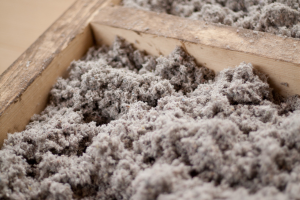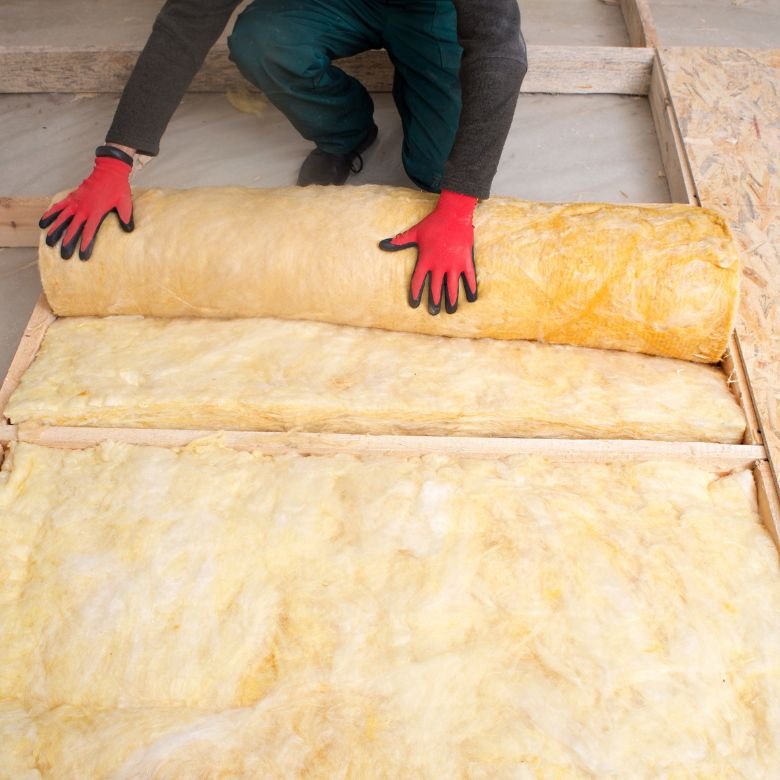While preparing the design of your house, you should already be thinking about what to use to insulate the flooring. Appropriate floor insulation at the lower storey of the building significantly affects the thermal comfort inside the rooms. How to insulate a floor at home and which insulating materials to choose? Here is a set of practical guidelines.

What role is played by floor insulation in residential buildings?
In conventional construction, insulation materials were rarely used for finishing floors. Even in residential construction of the second half of the twentieth century, little attention was paid to issues such as thermal insulation or even waterproofing of floors. The lack of thermal insulation layers in buildings causes the following:
- continuously expanding thermal bridges,
- loss of heat accumulated in habitable rooms,
- problems with maintaining appropriate temperatures and humidity inside living spaces.
It is thus unquestionable that a properly made floor insulation helps reduce the expenses for heating. It allows you to keep thermal comfort while reducing the risk of mould growing on walls, floors, or door and window joinery.
What to use to insulate a floor?
Insulation of a house floor should be entrusted to experienced specialists who know the techniques of installing thermal insulation materials. What is the best way to insulate lower sections of rooms? To choose the appropriate materials, you should hire a designer. An architect will suggest the optimum solutions and tell you about the current legal requirements for heat transfer coefficients.
Which materials are used to insulate floors in single- and multi-family residential buildings? You can use Styrofoam (XPS, white or graphite), mineral wool or PIR boards made of rigid polyurethane foam. The floor insulation layer is also formed by polypropylene and aluminium membranes for the purposes of floor heating.
Insulating a floor from the inside in an existing building
How to insulate the floor in an existing building without thermal insulation? Use several layers of protection by placing protective plastic sheeting atop the concrete base, then one or more layers of Styrofoam (or PIR boards), and cover it with another layer of plastic sheeting for the new screed. In old buildings, before you put down the first insulation layer, thoroughly clean the base and, if necessary, fill in any cracks and remove any irregularities.
Follow the instructions and guidelines from the manufacturers if you intend to insulate the floor at home by yourself. Carefully protect both the base and the spots where the floor meets the walls in order to prevent the formation of thermal bridges. If your floor is made of wood, consider installing mineral wool or hire professionals to fill it with PUR foam.
Insulating a floor with Styrofoam: pros and cons
Styrofoam remains to be one of the most commonly selected insulation materials. What contributes to its enduring popularity? Without a doubt, insulating a floor with Styrofoam is one of the simplest and cheapest methods to improve the energy efficiency of a building. Styrofoam is durable, extremely lightweight, moisture-resistant and easy to install. Any Styrofoam board can be easily cut to size with a knife.
In addition, insulating a floor with Styrofoam is ecological: extruded polystyrene emits no poisonous substances. Waste Styrofoam can be recovered by recycling.
What are the disadvantages of Styrofoam used for floor insulation? Styrofoam boards poorly withstand the effects of solvents and deform at high temperatures. When Styrofoam is cut to size, a lot of waste is generated in the form of chips and granules.

Thermal insulation of floors with PIR boards
In Poland, PIR boards are still a novelty on the market. They are high-quality products made of polyurethane foam. They are used for insulating walls, foundations and ceilings as well as to insulate the ground floor. An example of such material are the EUROPIR® boards, which perform very well even in damp rooms. PIR boards stand out with low water absorption, low heat transfer coefficient and resistance to micro-organisms; these properties remain unchanged even after treatment. Some of the PIR boards available in Poland are ready-made systems with profiled edges, which make the installation quick and easy.
Unfortunately, polyurethane boards are still expensive. Some investors prefer cheaper materials such as Styrofoam or mineral wool, for reasons of economy.
How to insulate a ground floor with PIR boards?
PIR boards are excellent for protecting floors against cold and moisture. How to insulate a floor with polyurethane foam sheets? Every manufacturer of PIR systems has their own installation technology. However, the way foam boards are handled is very similar to how we install extruded polystyrene:
- Always begin by thoroughly cleaning the base and laying down a sheet of protective plastic.
- Cover the plastic sheeting with PIR boards in such a way that their edges overlap, which prevents the formation of gaps and the loss of heat.
- At the last stage of installation, the boards should be again protected with a layer of plastic sheeting (which is usually the base for floor heating pipes).
- Cover the now insulated base with a thin layer of concrete.
Always place additional waterproofing and thermal insulation where the floor meets the walls. Use special flexible sealing tapes or polyethylene foams to avoid the loss of heat.
Are you looking for more information about house insulation and available materials and technologies? Read the other publications in our blog.
- https://energysavingtrust.org.uk/advice/floor-insulation/
- https://www.cse.org.uk/advice/floor-insulation/
- https://www.rockwool.com/group/products-and-applications/floor-insulation/
- https://www.products.pcc.eu/pl/id/1383175/plyta-termoizolacyjna-europir-standard-do-stropow-fundamentow-i-dachow/
